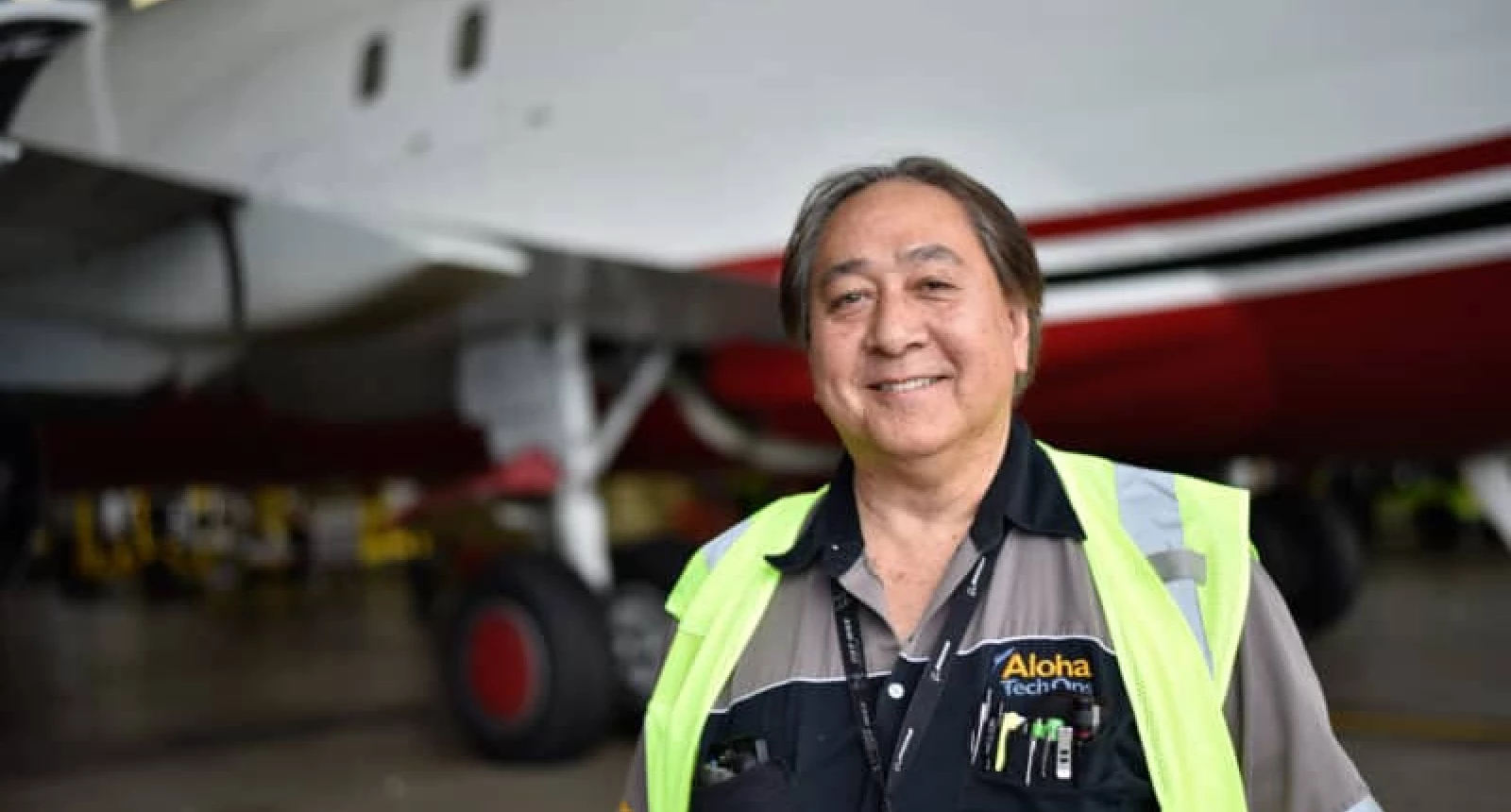‘Some people are fast learners, but with others, you need to take more time and have more patience.’ - Espina
Aloha Tech Ops (ATO) Maintenance Crew Chief Darren Espina is the 2023 Michael D. Garvey Award for Distinguished Service in Safety. In his more than 37 years as an aircraft mechanic, Espina has served in many roles, rising to the challenge of widely varying positions and responsibilities.
Espina grew up in Ewa Beach on the Hawaiian island of Oahu. His father was a Missile Technician in the Hawaii Air National Guard.
“When I was 12, he took me to an open house at Hickam Air Force Base. I got to see all kinds of different military aircraft. I also got to sit in an F4 Fighter Simulator. That day sparked my interest in aviation and set the path to where I am today.”
His first job, at the age of 16, was working for Delmonte Cannery as a ginaca machine operator.
“Back in the day, Hawaii was a sugar cane and pineapple state. So, a lot of kids back then got summer jobs in that industry. I fed pineapples into a machine to be skinned and canned. It was monotonous, but I earned a little money, and it taught me patience and perseverance.”
Espina eventually graduated from St. Louis High School in Honolulu in 1979 and then from Honolulu Community College and the University of Hawaii with a degree in Aviation Maintenance Technology. His aviation career began at Aloha Airlines.
“Between 1986 and 1992, I worked as a mechanic, mainly on the cycle crew at night, where I learned the craft of maintaining aircraft. I performed checks, component replacements, and repairs for a few years, then a lead mechanic position opened.”
Espina worked as a lead on swing shift.
“It was eye-opening to me. Not only was I responsible for myself and my work, but I was also responsible for people working under my direction. I learned to supervise people and ensure everyone was supported and worked safely. I enjoyed bringing people together to work as a team to complete a project.”
In 1993, Espina became an inspector in the Quality Control department, a position he held for 10 years before being promoted to Senior Lead Mechanic on heavy check aircraft.
“I wanted to learn NDT (Non-Destructive Testing). The airline industry changed the day Aloha Airlines aircraft blew its roof over the Pacific Ocean in 1988. Metal fatigue became a huge issue. So, different techniques were being developed to inspect aircraft skin. I thought it was an interesting skill to learn. Eddy current and ultrasound inspection techniques are still being used today, keeping the aircraft and people safe.”
Aloha Airlines shut down in 2008, but Espina was able to move into a mechanic role at Aloha Air Cargo.
“Today, I am the swing shift Maintenance Crew Chief and have come almost full circle to where I started with Aloha Airlines— bringing the maintenance team together to get the project done.”
Espina said his greatest challenge is having to do more with less.
“Industry-wide, there’s a shortage of aircraft mechanics. ATO is vigorously trying to hire people, but it takes a while for them to get qualified. For now, we make do with what we have.”
As Maintenance Crew Chief for ATO, he works with apprentice mechanics, instilling the culture and disciplined practices that ensure safety in aircraft maintenance. His nominator described him as “a leader we all hold in high regard” who ensures everyone on the team goes home safely each day.
“I think mentoring is something I have adapted to. Some people are fast learners, but with others, you need to take more time and have more patience. Essentially, I introduce them to the aircraft. I show them how to operate systems and what to watch out for. I stress to them that they aren’t the only ones working on the aircraft. If they are going to operate anything, make sure it is clear. We don’t want anyone to get hurt. Bottom line—be safe.”
Espina remembers a day early in his career when he was part of a crew charged with weighing an aircraft.
“Basically, we were jacking an aircraft on three soda-can-sized transducers to get the weight. It was a really sketchy undertaking. Think of it—the aircraft jacked in the air at each landing on three soda cans. Well, the aircraft did fall off the jacks. Luckily, no one got hurt. Since then, we have safer platforms to weigh the aircraft. No need to worry about the aircraft falling. Sometimes, if you run it up the chain saying there must be a better way, the problems get solved.”
He says he believes ATO is set up well for growth.
“In the next decade, I see the 767s expanding to more locations. I’m toward the end of my career, but I still have a lot to give. I will continue to mentor new mechanics. Aloha Air Cargo and Aloha Tech Ops have a bright future.”

